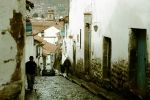
A classic narrow Cusco street - many are too steep and/or too narrow for cars.
I arrived in Cusco after an spectacularly scenic but uncomfortable bus ride from Puno near the Bolivian border. For the earlier parts of this trip, see this link for the first leg in Chile, and this link for the next part in Bolivia.
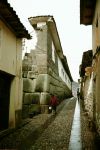
Too me, the best part of Cusco is the wonderful streets. Many are in the same location and are the same width as they were in Inca times, and as these pictures show, they are still lined with many Inca walls, often going up the sides of the building for 3 - 6 feet. with Spanish colonial construction above that.
I arrived in Cusco in late afternoon and took a taxi to an area around Plaza San Blas. My hotel in Puno had recommended a hotel there, which turned out to be comfortable, inexpensive, and in a very nice area about three long steep blocks above the Plaza de Armas.
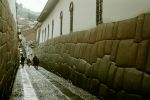
Here's one of the best known streets, lined with fine quality Inca stonework, the kind of work reserved for temples and royal residences.
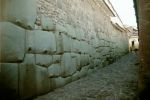
Here's an especially fine Inca wall in a passageway near the Plaza de Armas.
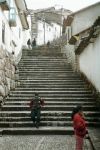
As I've said, many of the streets are too steep and/or too narrow for cars. In these cases there often are stairs, since the city is quite mountainous. My first full day in Cusco, I wandered all over the side of the city I was staying in, as well as the areas around downtown. I bought a "Cusco Ticket," a ticket to most of the Cusco and Cusco area attractions. Since I had it, I began to make visits to pretty much everything on it, museums, ruins, churches, and convents.
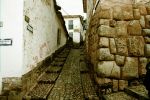
Since Cusco is about 500 meters (1,600 feet) lower than La Paz and Lake Titicaca, and I had been at high elevations for a week, I wasn't bothered much by the city's location at 3,350 meters or higher. I wandered all over the city, climbing much higher than the plaza in the neighborhoods above my hotel.
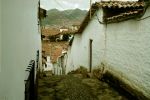
A typical scene is the streets plunging away below you like this.
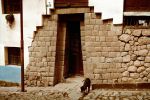
Interesting combinations are common, such as this Inca doorway in an otherwise rather pedestrian building.
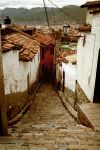
The higher you get, the more likely the streets are to be simply stairways.
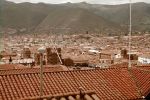
One passageway I found led along a steep embankment allowing great views of the Plaza de Armas.
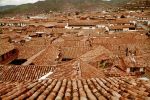
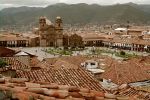
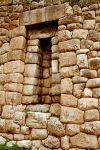
Niches like this are a touchstone of Inca design and are still used in Quechua adobe homes today. The Incas used them for ceremonial objects or simply as furniture.
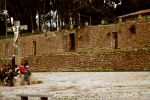
These ruins line a small plaza in front of a church high above the Plaza de Armas. from here are some of the best views of the city, in my opinion!
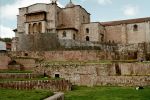
This convent was built atop a large temple (typical!), and this view shows lower quality stonework at the base, especially fine Inca work in the middle, and colonial work above (using stones torn out of Inca buildings, of course).
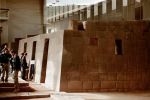
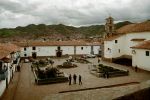
My Hotel was a half a block from this fine little plaza by the colonial church of San Blas (right side of the picture).
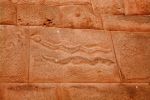
This wall contains a number of carved snakes - I counted at least a dozen, making the street's name (Siete Culebras, or seven snakes) a lie. This narrow pedestrian street was the also the only one I saw with official urinals located on the walls.
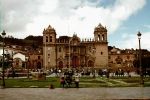
All three may be visited with a Cusco Ticket and teh art alone is worth a visit.
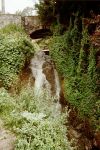
This little falls was one of the gems you find if you wander the upper parts of the city.
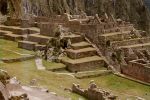
Note: At this point, I went to Machu Picchu - for pictures from that side trip, follow this link!
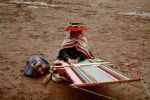
The day after my Machu Picchu trip I spent in Cusco enjoying more sights, walking more, and shopping. The day after that - my last full day of the trip - I took a day tour that went to the Urubamba valley, the area now called the "Valle Sagrado" or sacred valley. It stopped in several ruins, as well as in craft markets and villages.
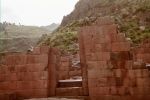
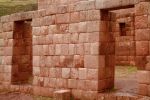
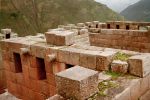
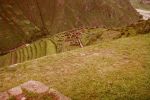
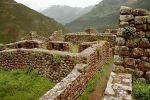
Of the hundreds of visitors to the ruins when I was there, I was the only one to go down to check out this part of the ruins.
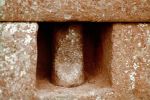
There were two of these, one either side of a gate, presumably to tie it shut.
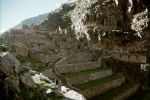
An eleventh-century fortress later converted to a fourtheenth-century city, this site shows the different technologies of the two eras very well.
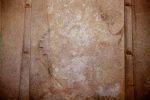
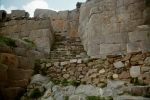
Eleventh-century stonework below, fourtheenth-century temple construction above.
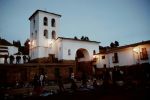
This whole town is built on ruins, here barely visible below the church in the last light of the day.
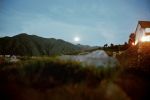
A good place to say goodbye to Peru as I was flying out the next morning!
However, if you missed my Machu Picchu pictures, here's a link! Or, if you want to go back and read about the earlier parts of this trip, see this link for the first leg in Chile, and this link for the next part in Bolivia.